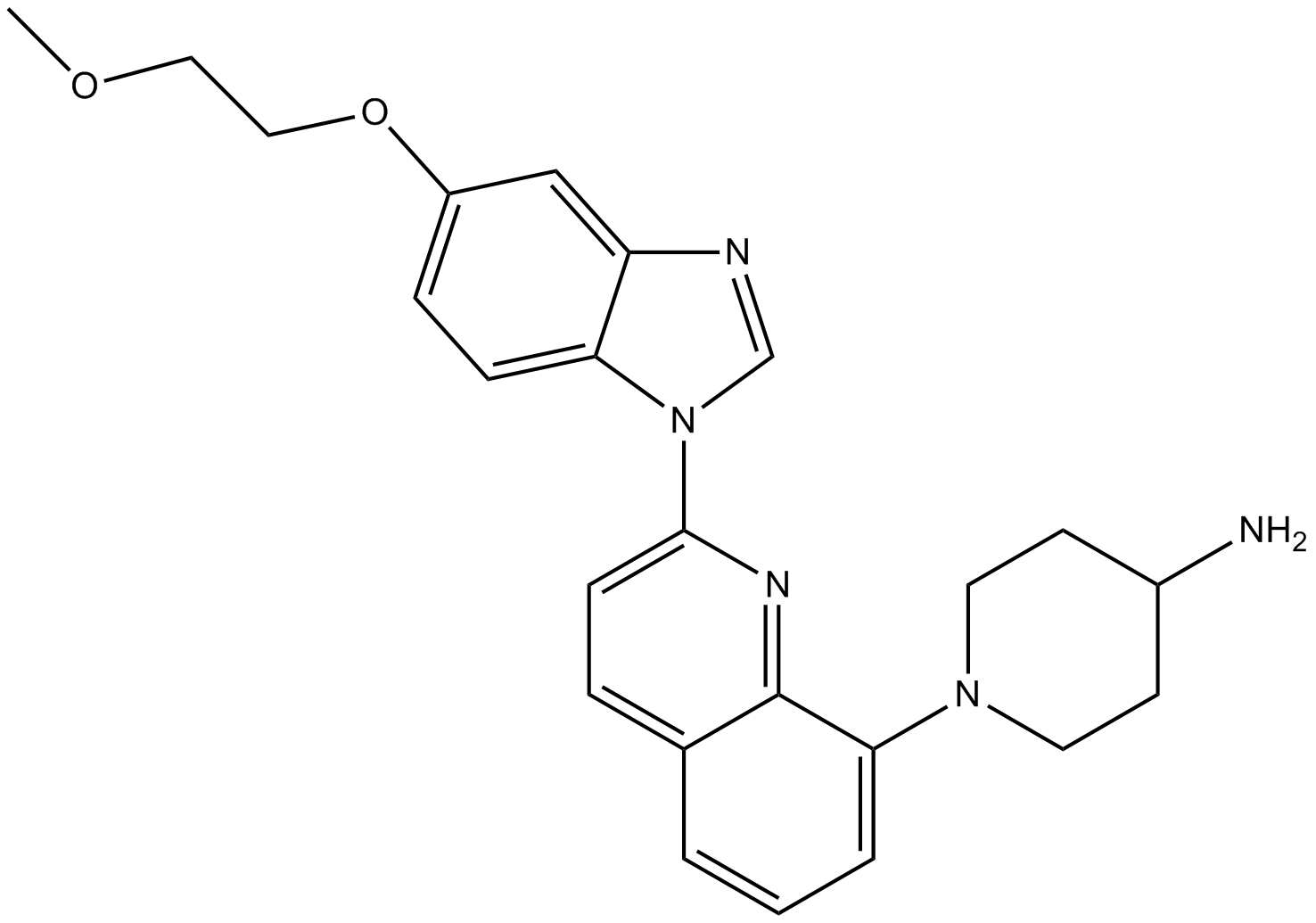CP-673451 |
| Catalog No.GC12980 |
PDGFRα/β inhibitor,potent and selective
Products are for research use only. Not for human use. We do not sell to patients.

Cas No.: 343787-29-1
Sample solution is provided at 25 µL, 10mM.
CP-673451 is a potent inhibitor of PDGFR with IC50 value of 10nM and 1nM for PDGFR-α and PDGFR-β, respectively [1].
CP-673451 is an ATP-competitive inhibitor and is investigated to treat for cancer. It is highly selective against PDGFR-α and PDGFR-β over a variety of other kinases such as VEGFR-1, VEGFR-2, Lck, TIE-2 and EGFR. In PAE-β cells, CP-673451 inhibits PDGFR-β with IC50 value of 6.4nM. CP-673451 also inhibits c-kit with IC50 value of 1.1μM in H526 cells. In rat C6 glioblastoma xenograft models, a single oral dose of 50mg/kg CP-673451 reduces > 50% phosphorylation of PDGFR-β for 4 hours. In addition, CP-673451 is found to inhibit PDGF-BB-induced angiogenesis in a sponge angiogenesis model. Furthermore, CP-673451 inhibits the tumor growth in Colo205, LS174T, H460, and U87MG xenograft models. It also reduces the microvessel density of Colo205 xenografts [1].
References:
[1] Roberts W G, Whalen P M, Soderstrom E, et al. Antiangiogenic and antitumor activity of a selective PDGFR tyrosine kinase inhibitor, CP-673,451. Cancer research, 2005, 65(3): 957-966.
Average Rating: 5 (Based on Reviews and 33 reference(s) in Google Scholar.)
GLPBIO products are for RESEARCH USE ONLY. Please make sure your review or question is research based.
Required fields are marked with *




















